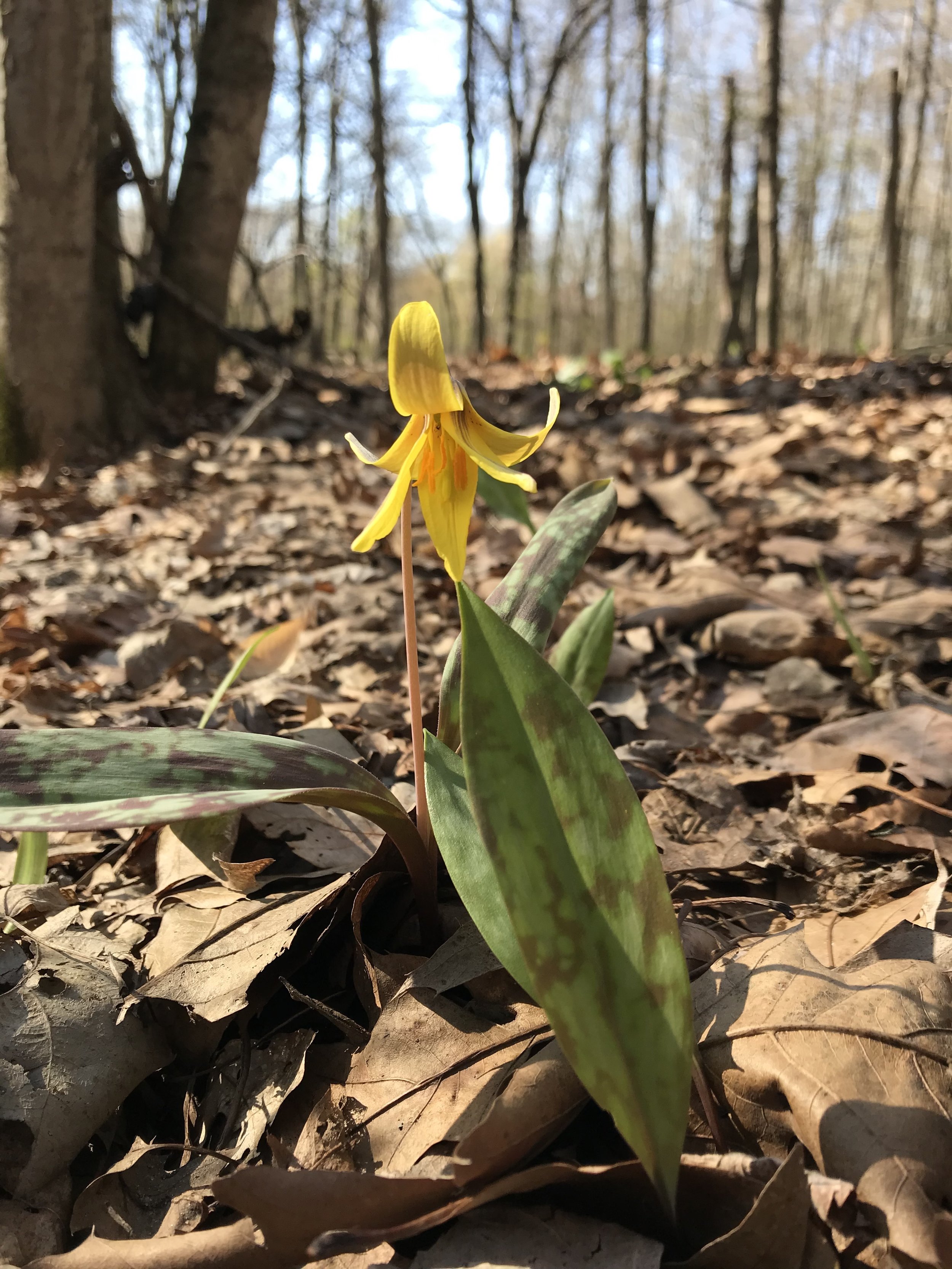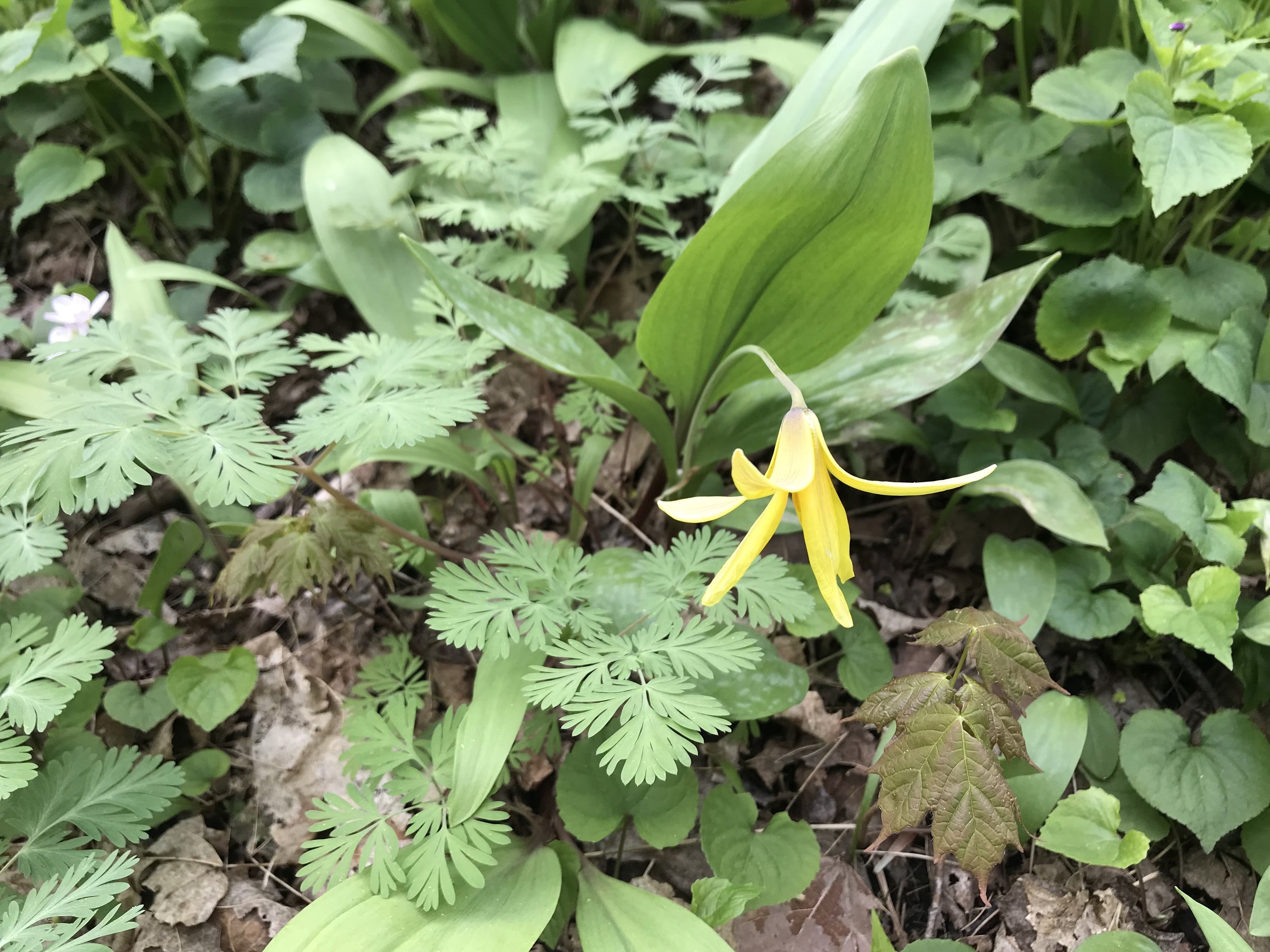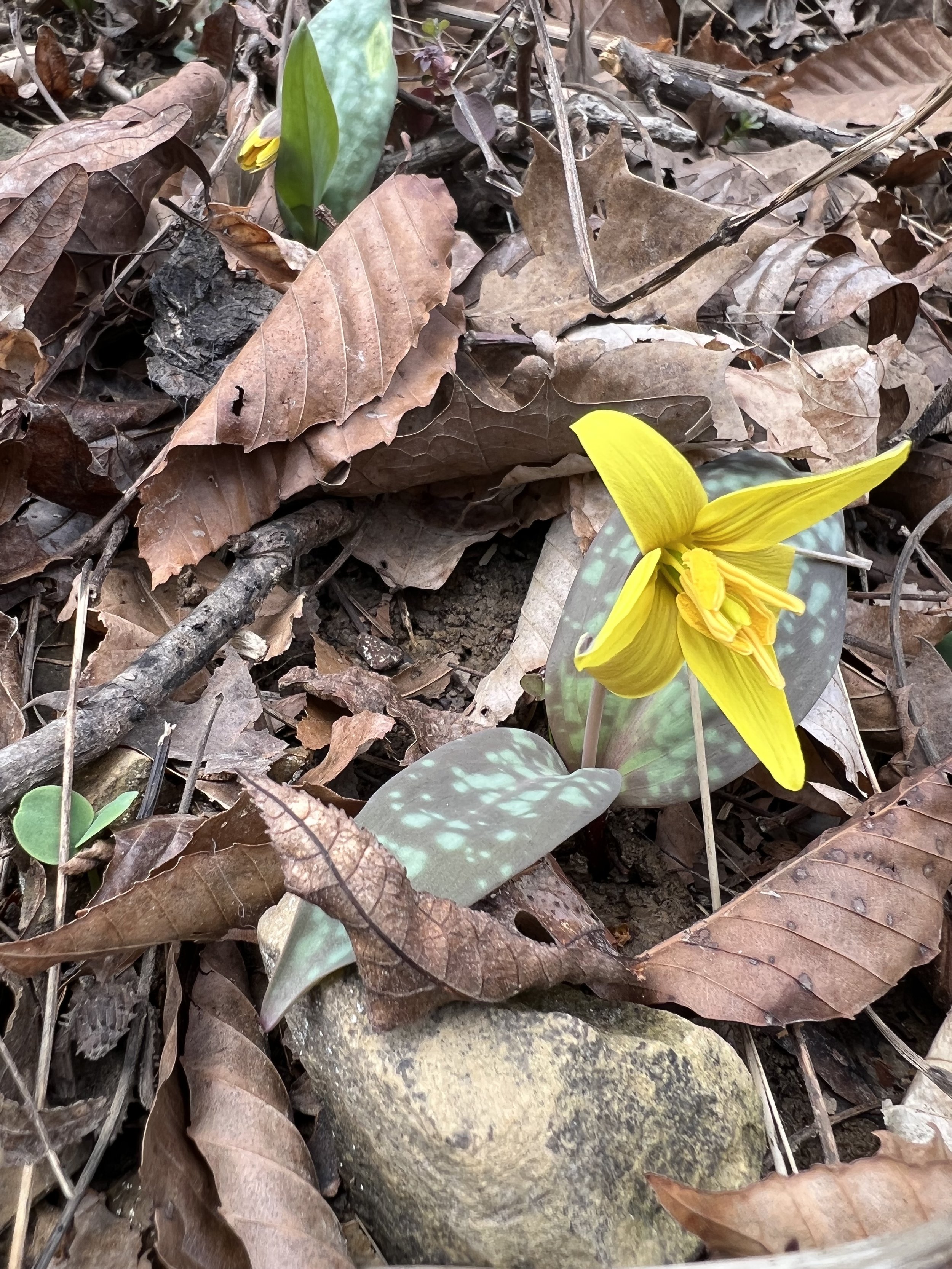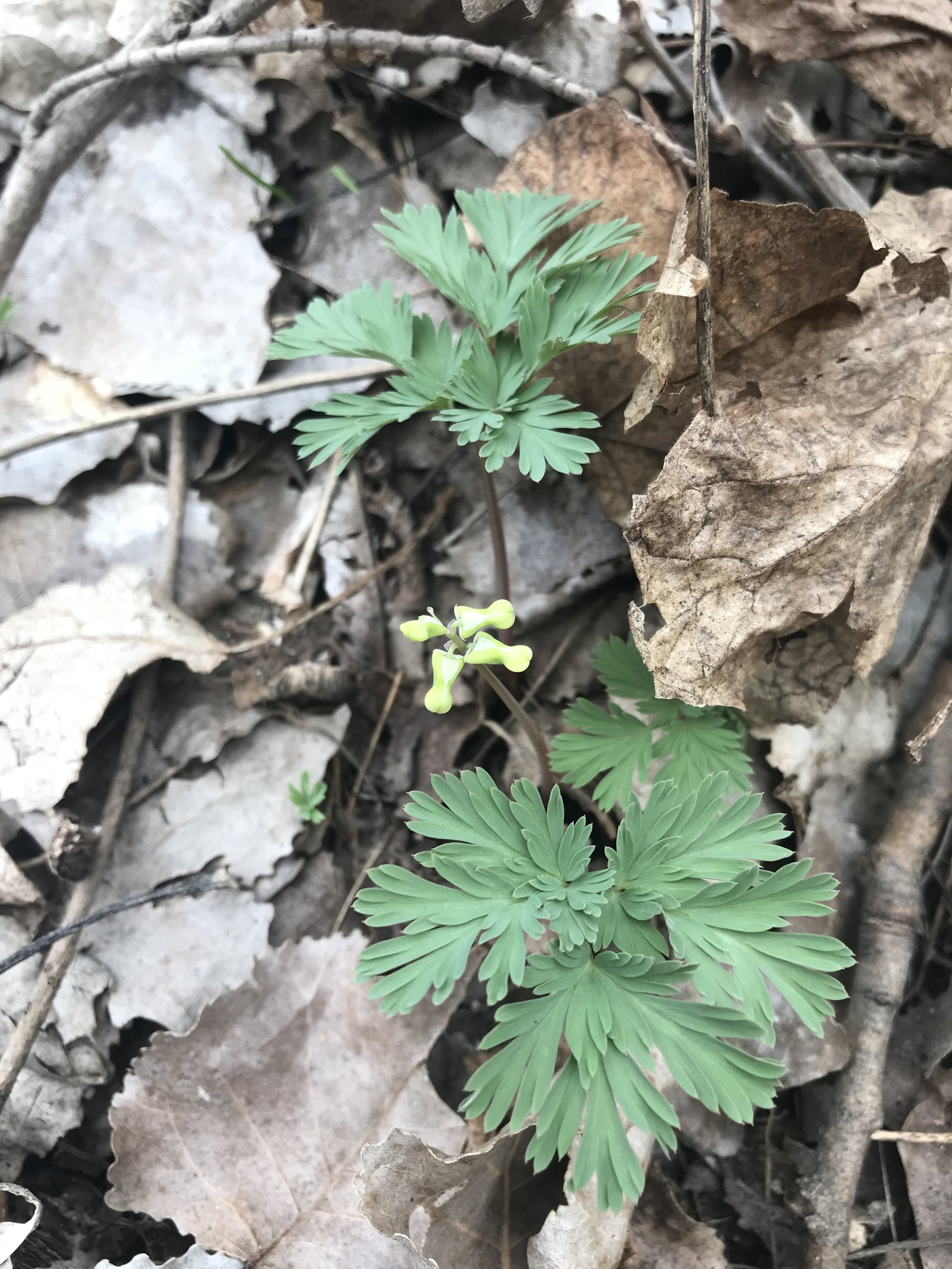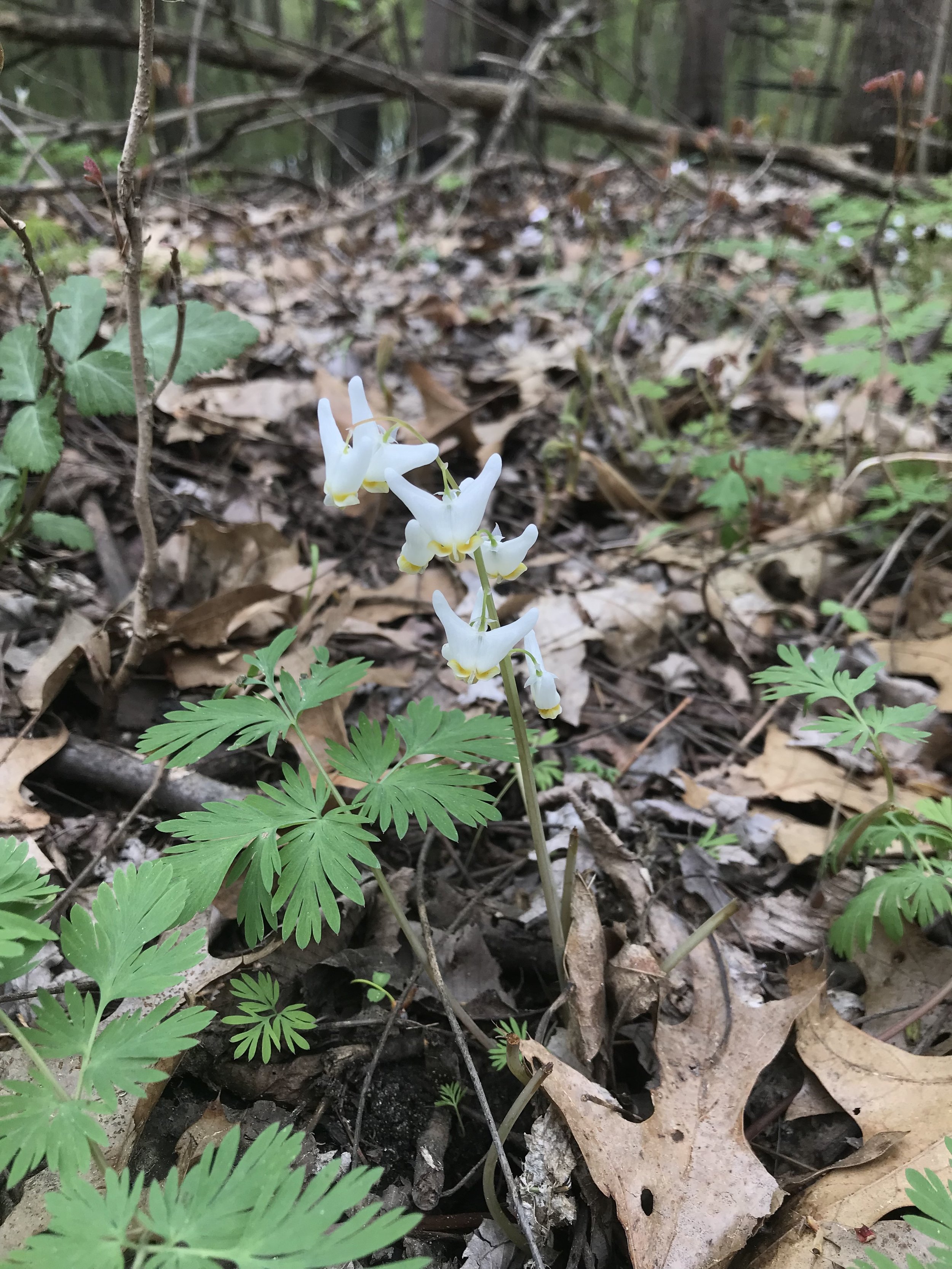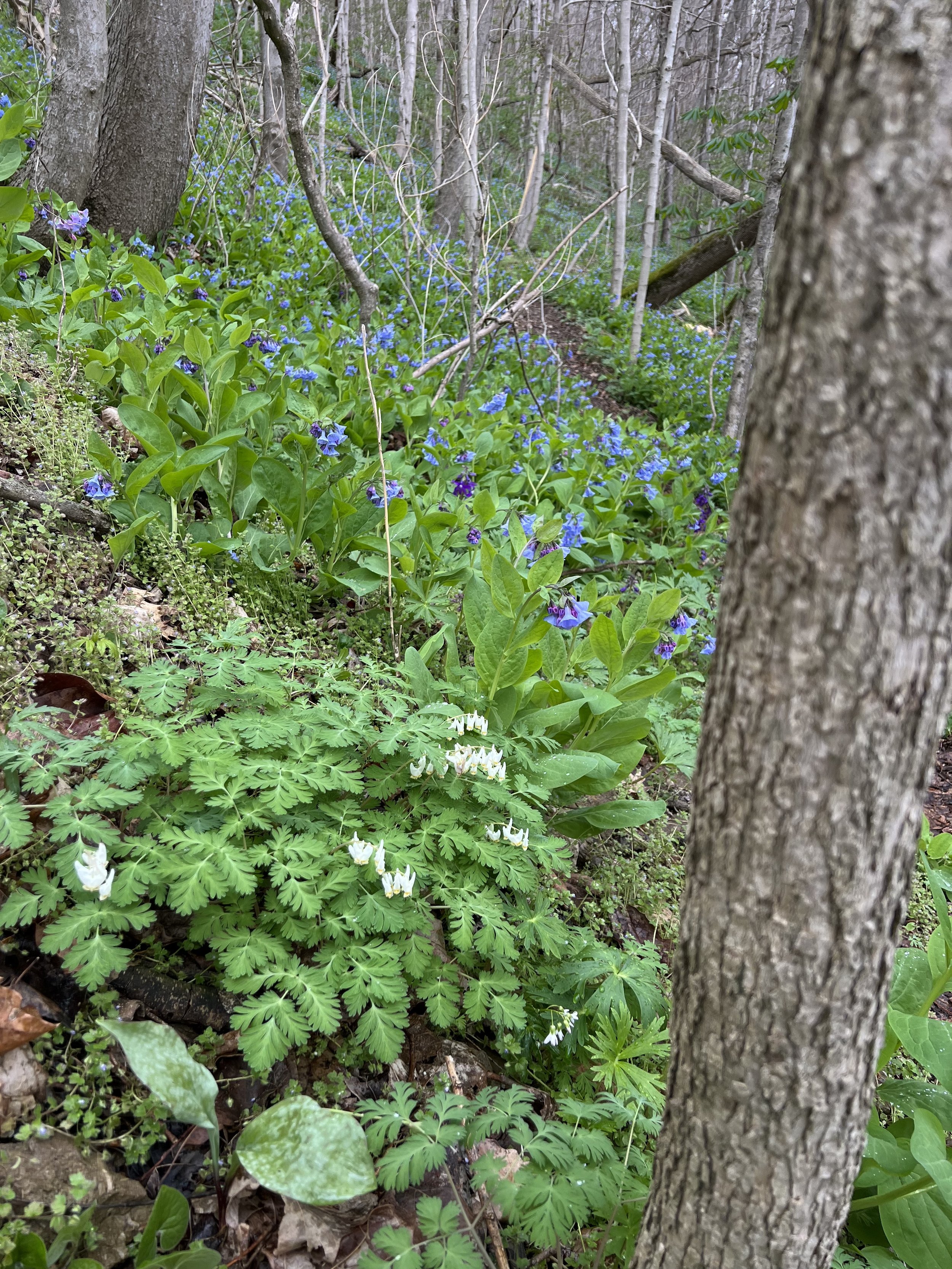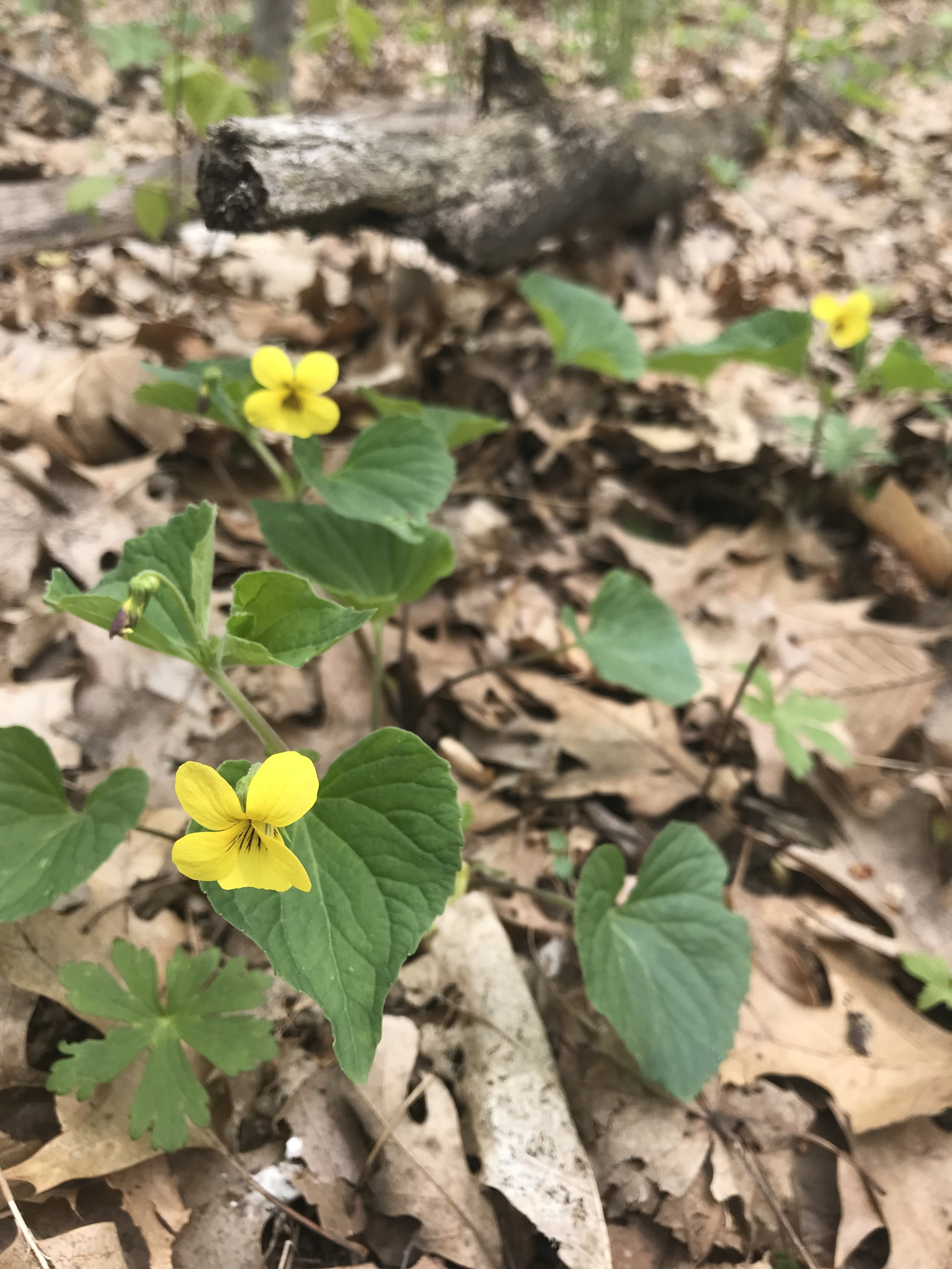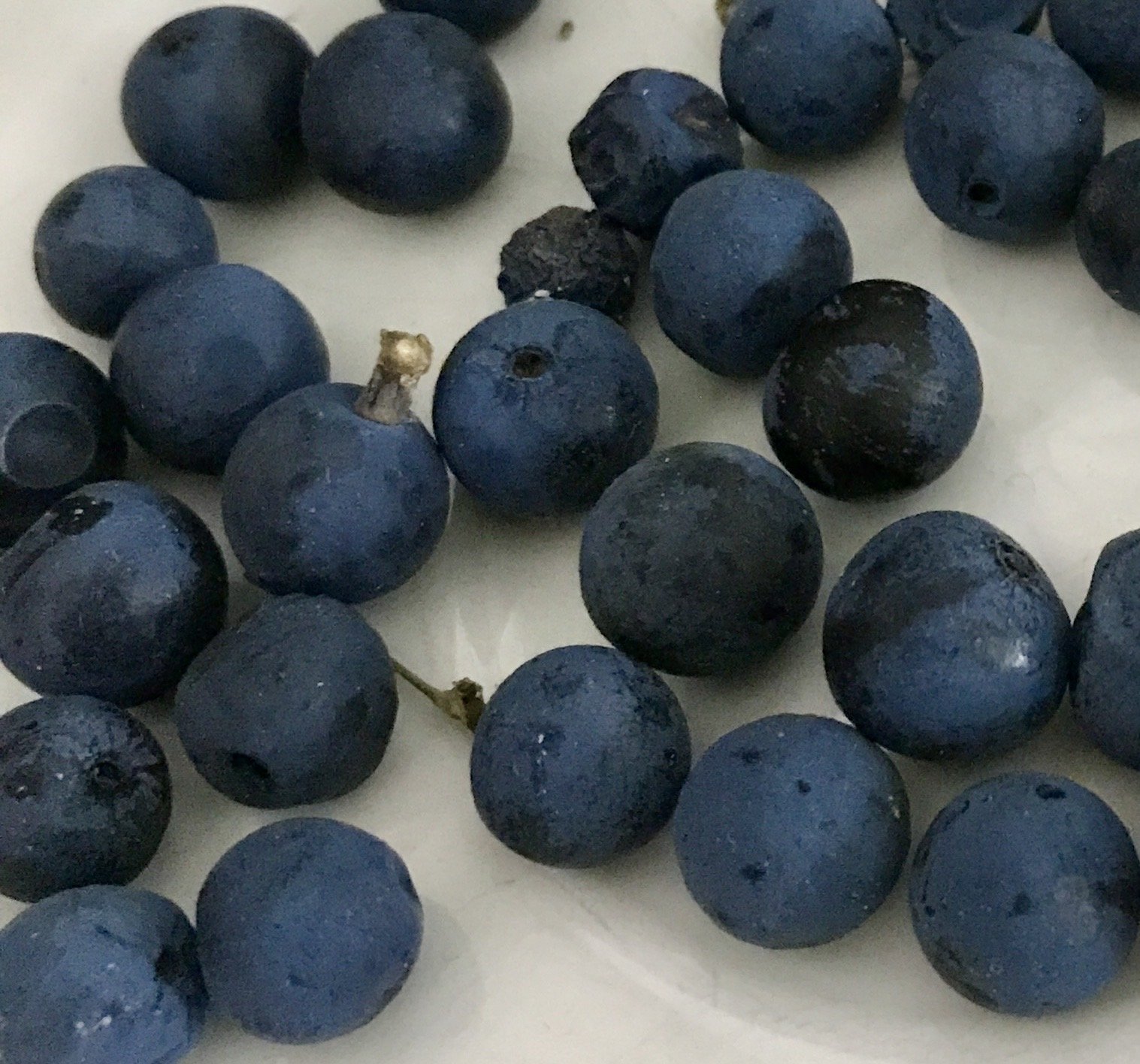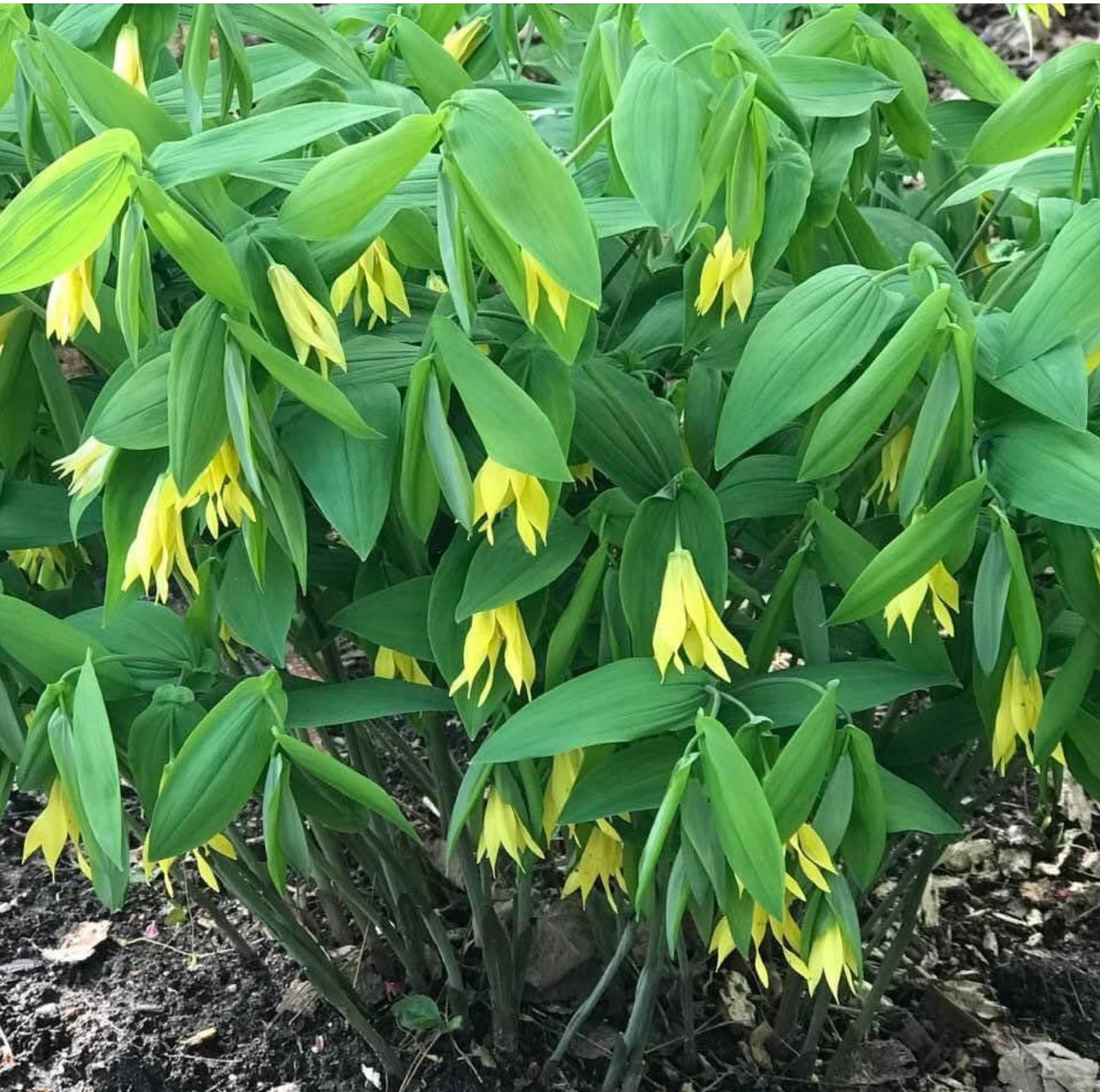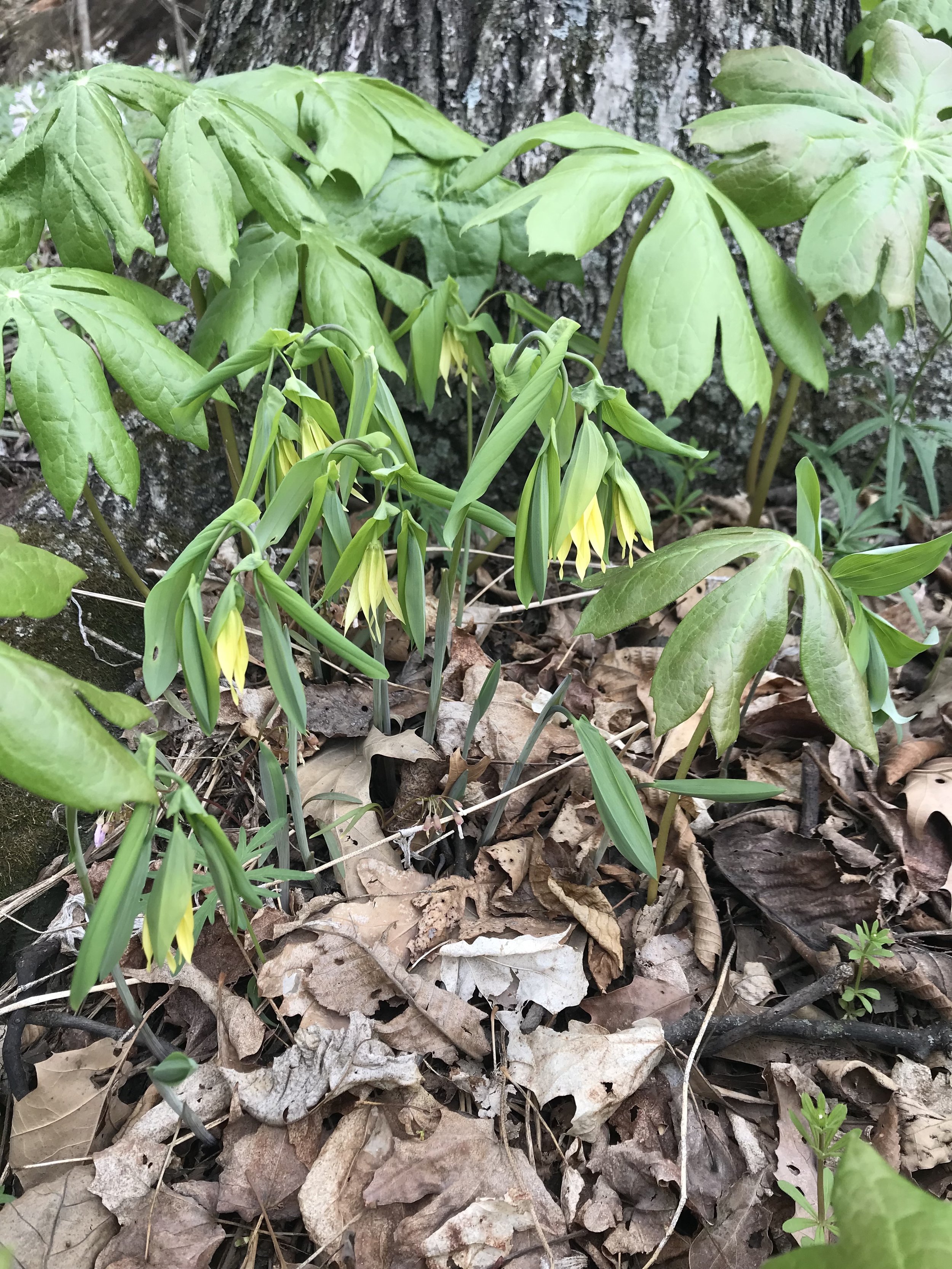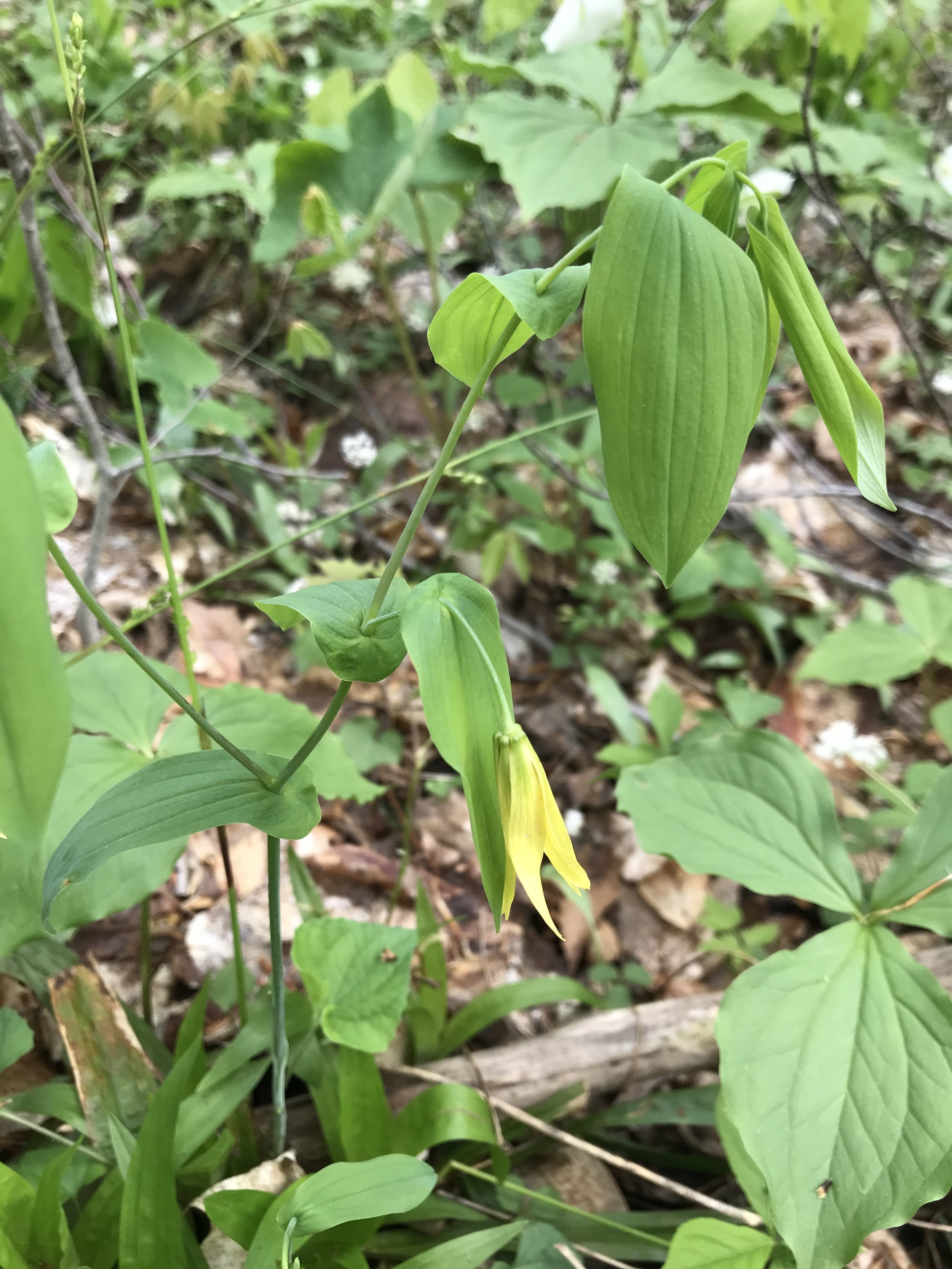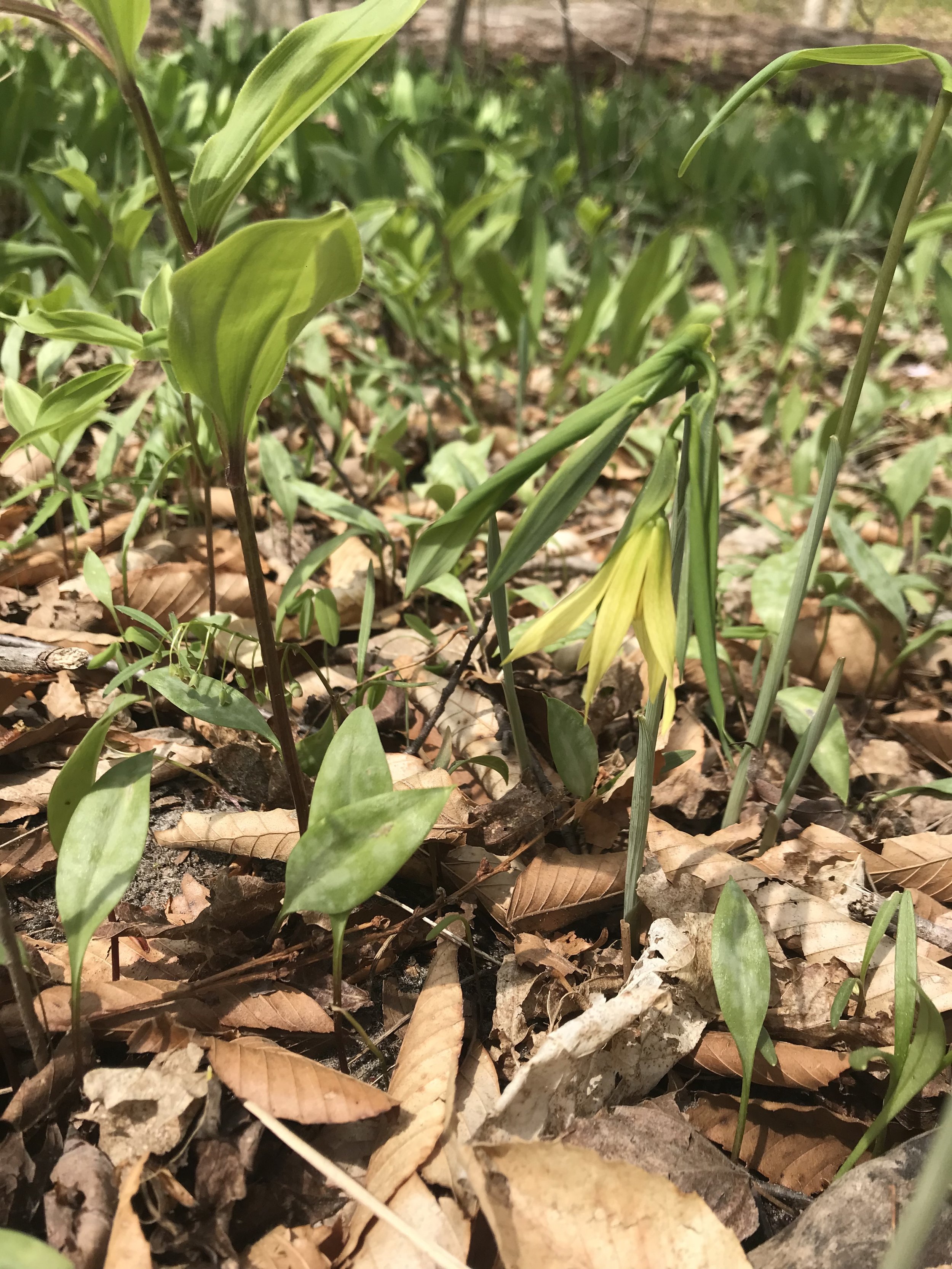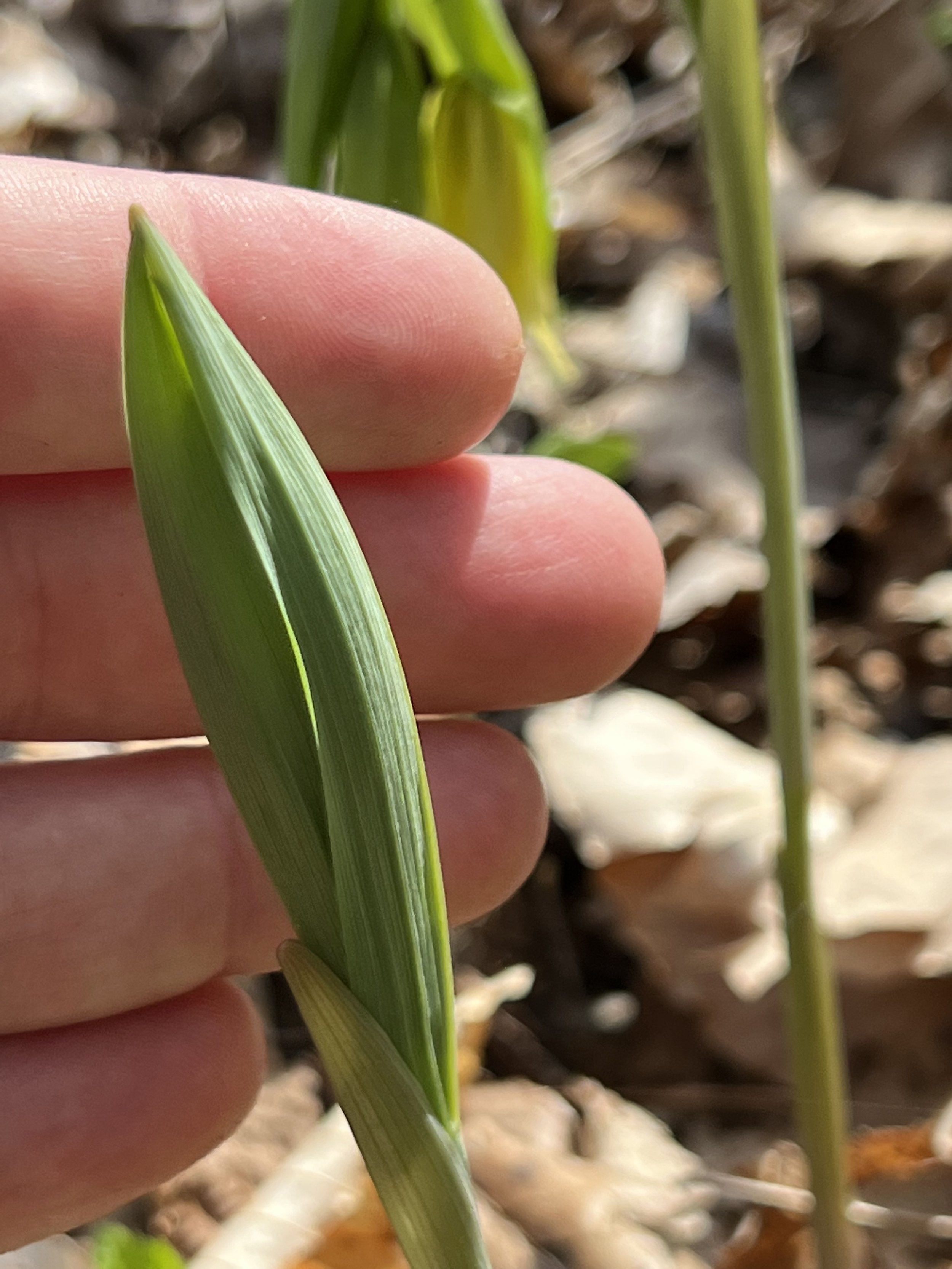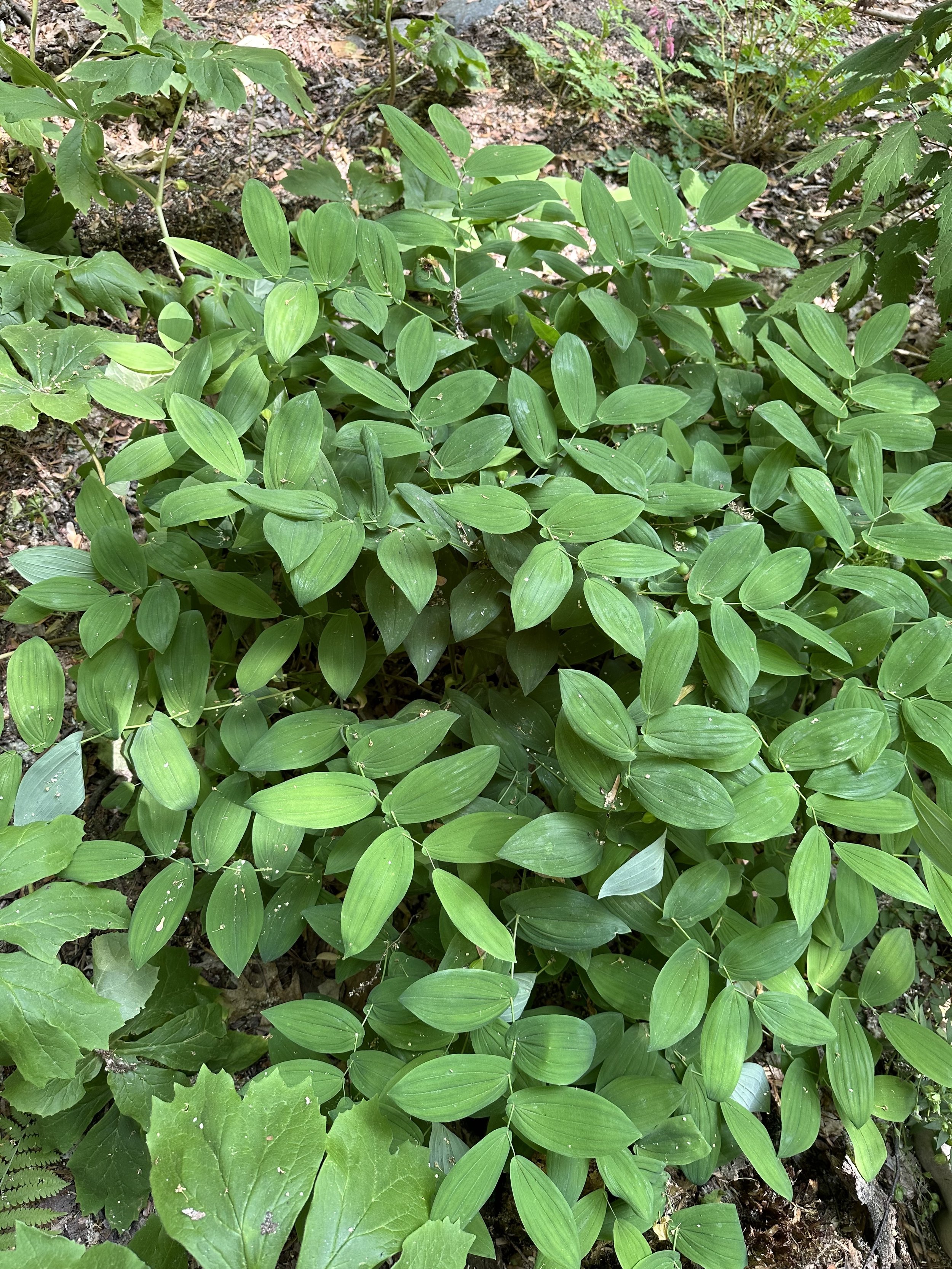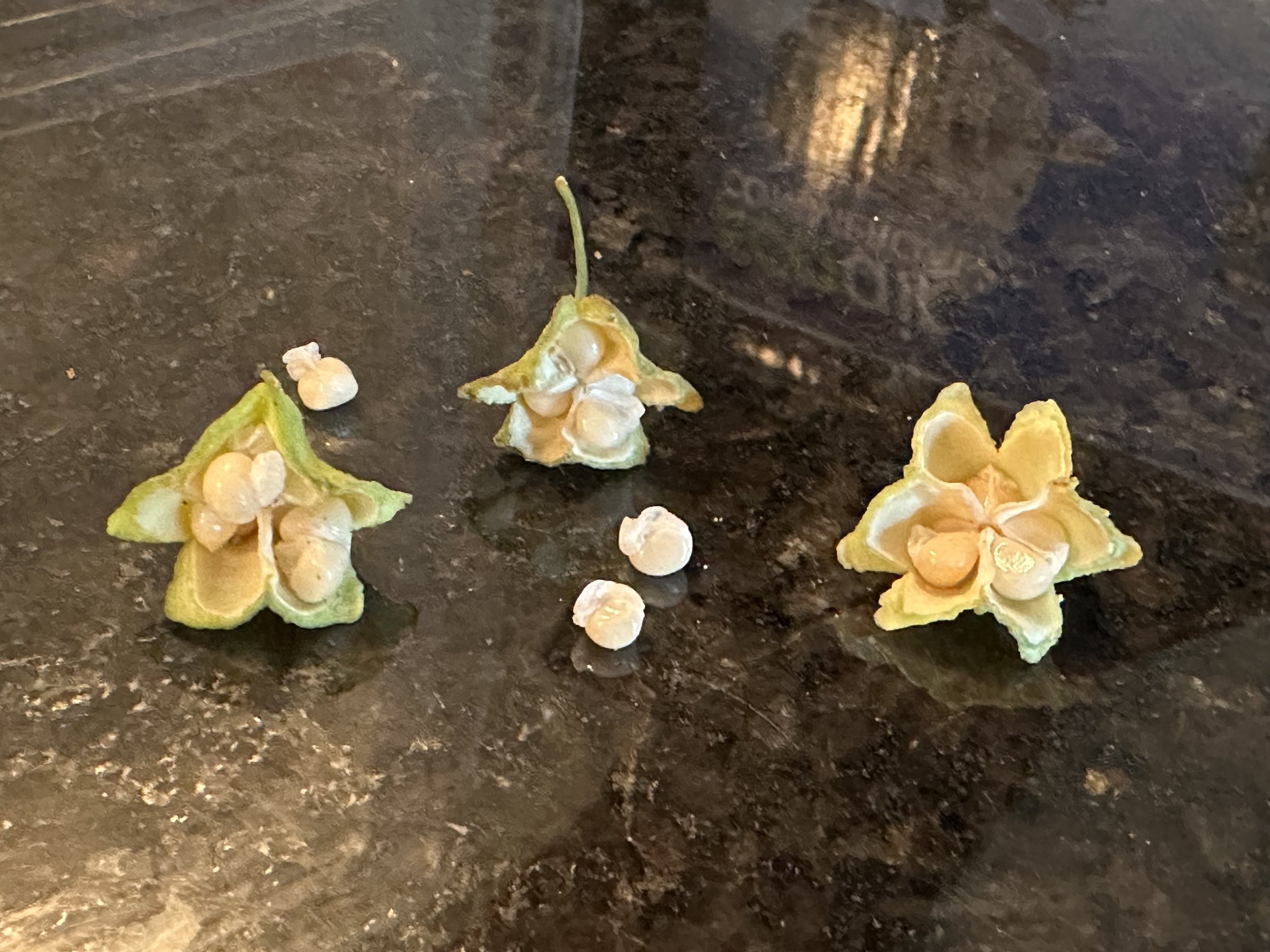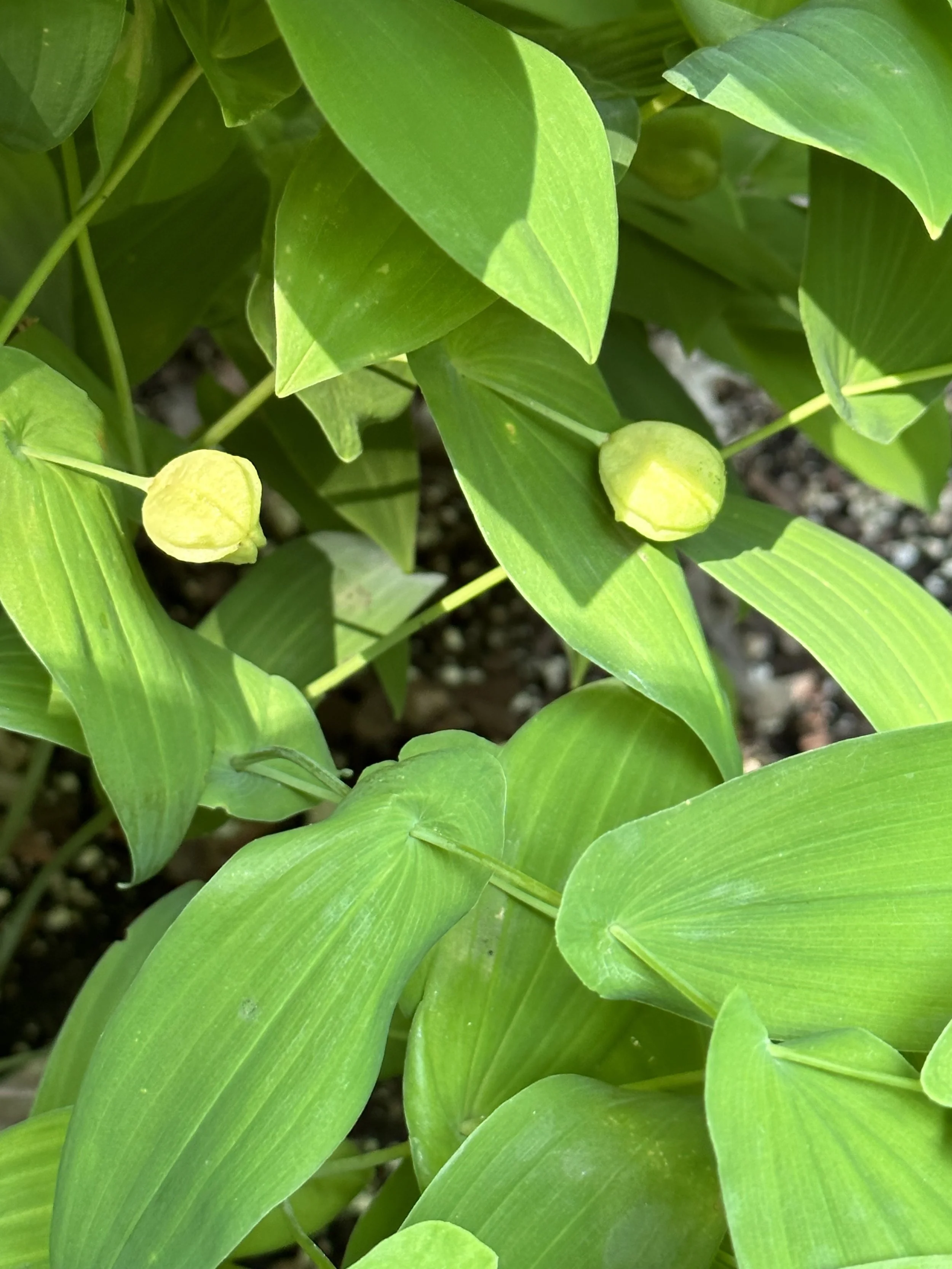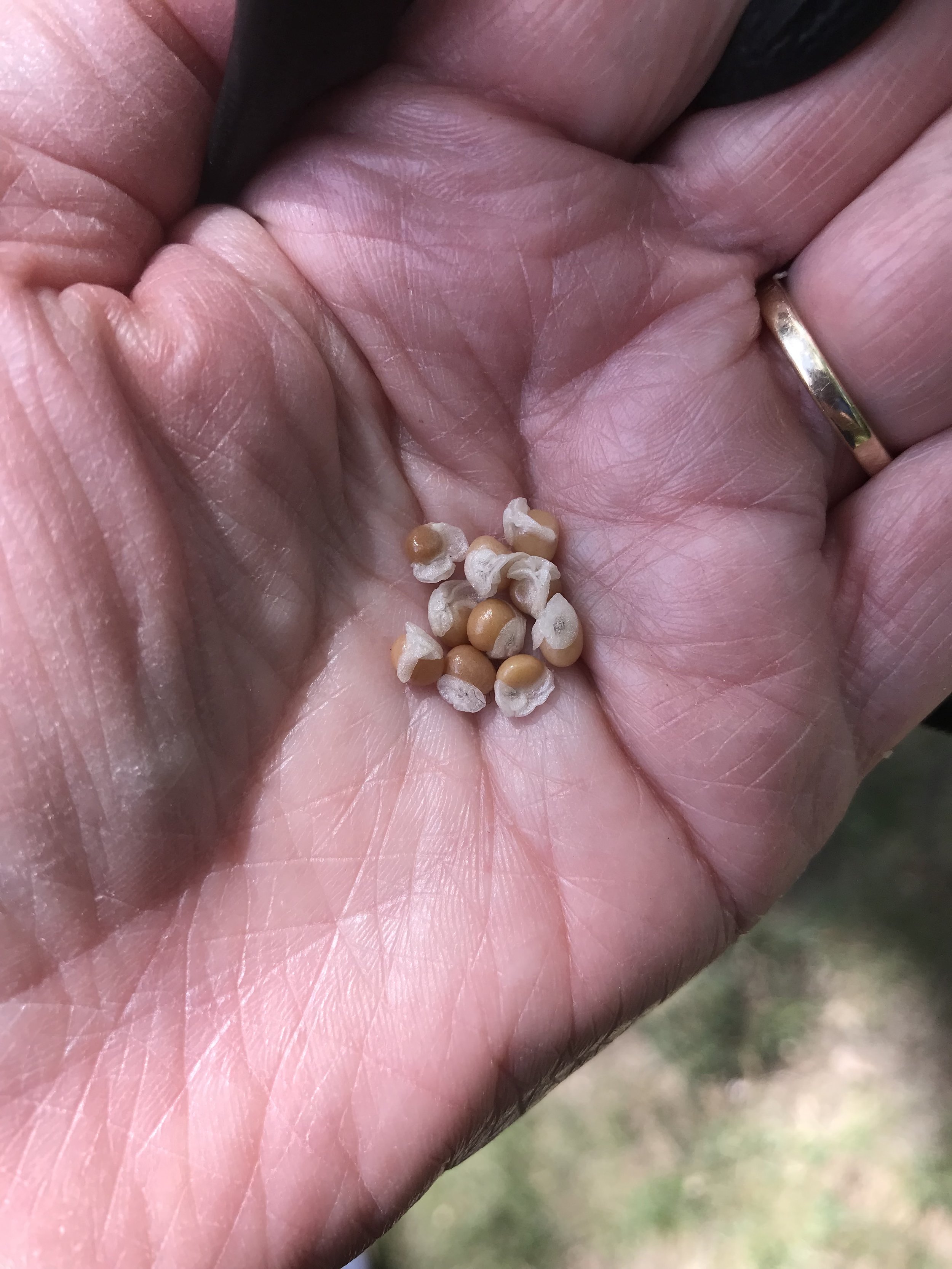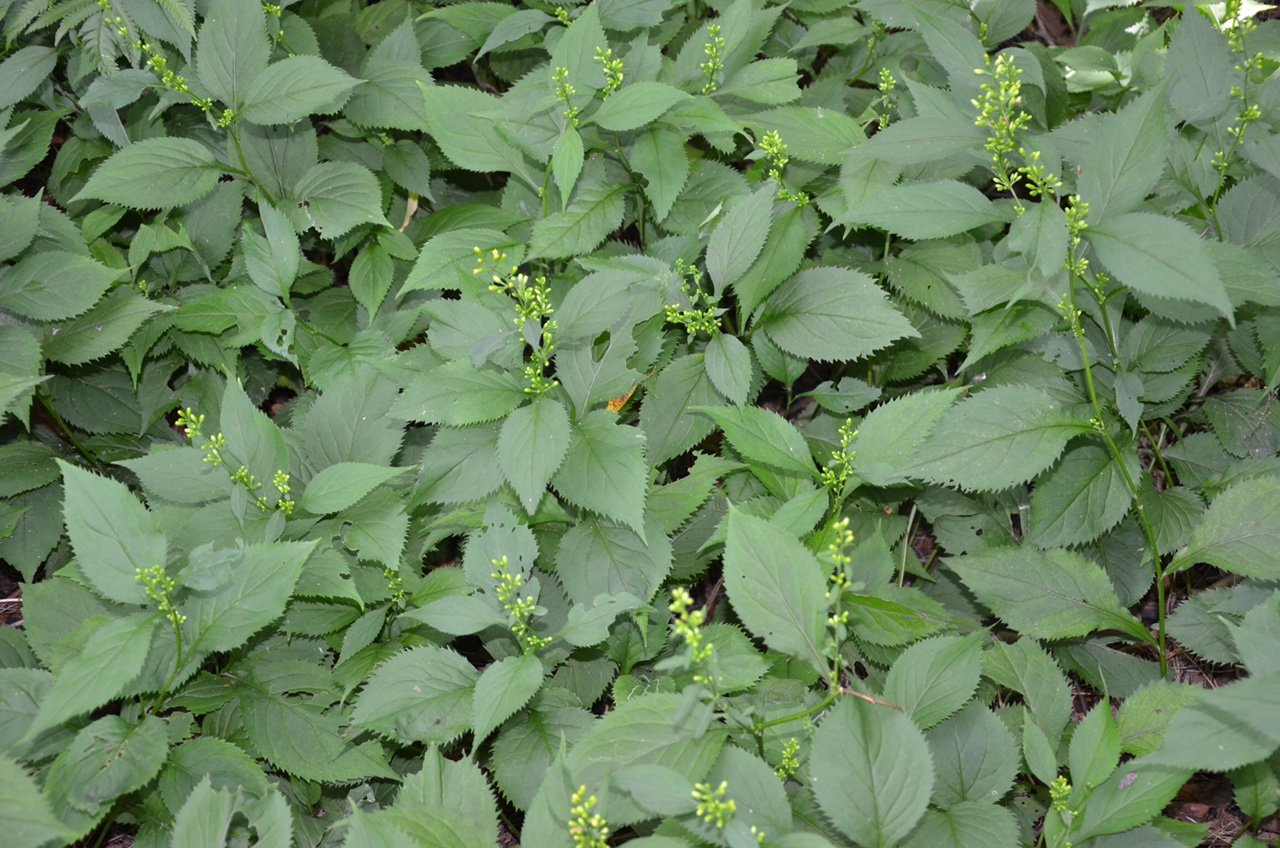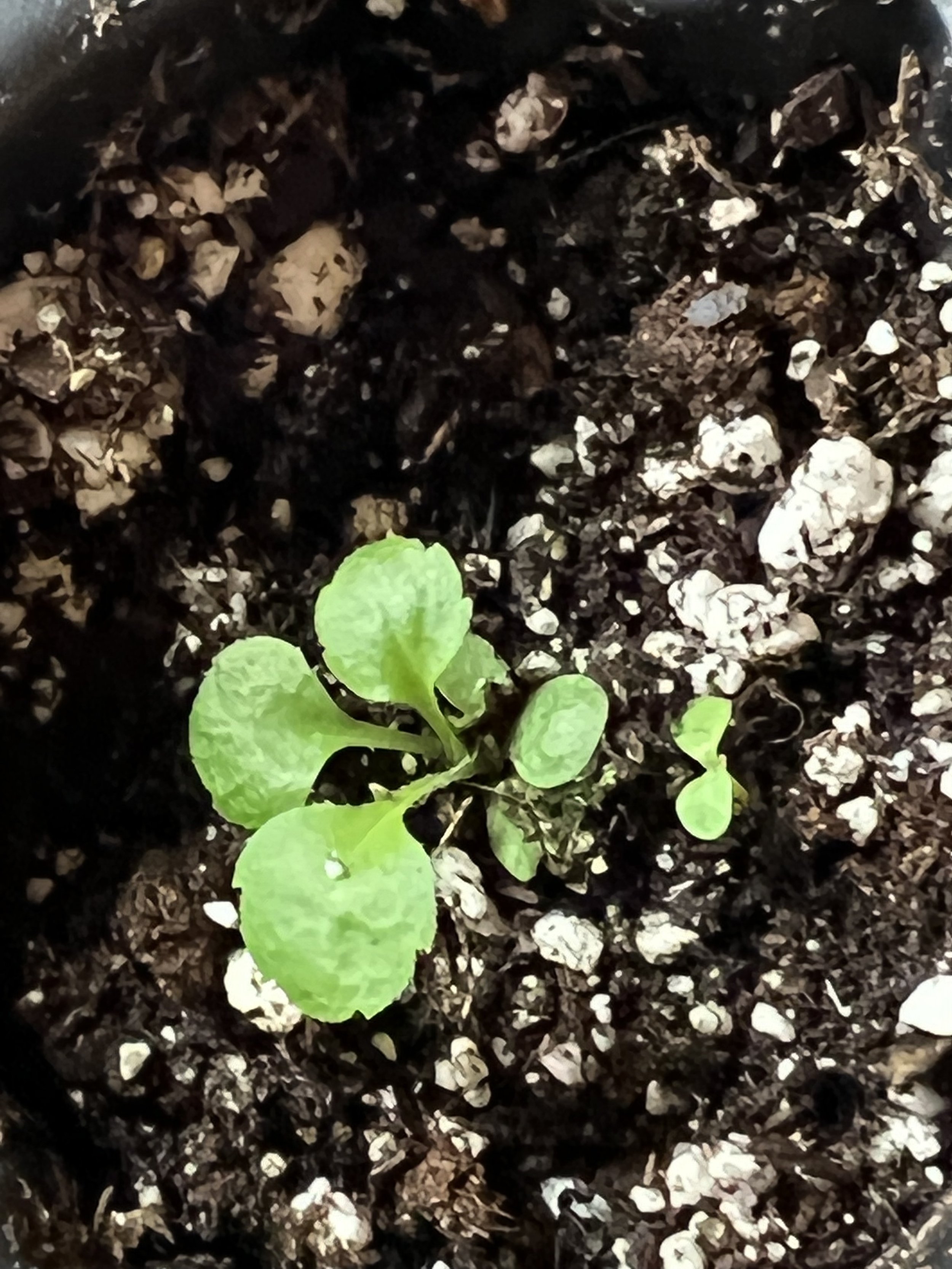Yellow Trout Lily (Erythronium americanum)
Yellow Trout Lily has tulip-like mottled leaves which are smooth. Trout lily does spread and form colonies, so the leaves may be abundant and they emerge early in the spring. Flowers come a bit later, in April, and only on mature plants. The plant reproduces vegetatively with underground corms as well as by making seeds.
Yellow flower buds form with the petals close together. As the flower matures, these petals usually curve backward displaying the reproductive parts when it is sunny. The anthers (male part that has pollen) may be either yellow or red, and the stigma (pollen receptacle) grows straight out of the center.
Yellow trout lilies grow in rich deciduous forests, throughout the state. The other species of trout lily—White Trout Lily—grows in floodplains in the southern part of the state. The leaves cannot be distinguished between the two species and they do grow together at times.
The leaves will disappear by mid-summer.
Yellow Trout Lily (Erythronium americanum)
Michigan Flora reference page for state distribution: Yellow Trout Lily
height: 8 inches
bloom time: April
soil: medium, rich
sun: sun in the spring, shade in summer
plant spacing: 6”
flower: yellow with yellow or red anthers
life cycle: perennial
family: Liliaceae
Yellow Trout Lily has tulip-like mottled leaves which are smooth. Trout lily does spread and form colonies, so the leaves may be abundant and they emerge early in the spring. Flowers come a bit later, in April, and only on mature plants. The plant reproduces vegetatively with underground corms as well as by making seeds.
Yellow flower buds form with the petals close together. As the flower matures, these petals usually curve backward displaying the reproductive parts when it is sunny. The anthers (male part that has pollen) may be either yellow or red, and the stigma (pollen receptacle) grows straight out of the center.
Yellow trout lilies grow in rich deciduous forests, throughout the state. The other species of trout lily—White Trout Lily—grows in floodplains in the southern part of the state. The leaves cannot be distinguished between the two species and they do grow together at times.
The leaves will disappear by mid-summer.
Yellow Trout Lily (Erythronium americanum)
Michigan Flora reference page for state distribution: Yellow Trout Lily
height: 8 inches
bloom time: April
soil: medium, rich
sun: sun in the spring, shade in summer
plant spacing: 6”
flower: yellow with yellow or red anthers
life cycle: perennial
family: Liliaceae
Yellow Trout Lily has tulip-like mottled leaves which are smooth. Trout lily does spread and form colonies, so the leaves may be abundant and they emerge early in the spring. Flowers come a bit later, in April, and only on mature plants. The plant reproduces vegetatively with underground corms as well as by making seeds.
Yellow flower buds form with the petals close together. As the flower matures, these petals usually curve backward displaying the reproductive parts when it is sunny. The anthers (male part that has pollen) may be either yellow or red, and the stigma (pollen receptacle) grows straight out of the center.
Yellow trout lilies grow in rich deciduous forests, throughout the state. The other species of trout lily—White Trout Lily—grows in floodplains in the southern part of the state. The leaves cannot be distinguished between the two species and they do grow together at times.
The leaves will disappear by mid-summer.
Yellow Trout Lily (Erythronium americanum)
Michigan Flora reference page for state distribution: Yellow Trout Lily
height: 8 inches
bloom time: April
soil: medium, rich
sun: sun in the spring, shade in summer
plant spacing: 6”
flower: yellow with yellow or red anthers
life cycle: perennial
family: Liliaceae
